As of 2014, only 11% of total power production in the world comes from nuclear sources and about 39% comes from coal. But stats are about to change as demand for clean energy is on the rise. However, the handling of nuclear reactors and other critical components make this form of energy source far more dangerous than any other source.
Due to the technological advancement of some East Asian nations, most of the biggest Nuclear power plants are situated here. That’s being said, let’s start with the list. The following list is based on the data published by the International Atomic Energy Agency (IAEA).
Table of Contents
15. Yangjiang Nuclear Power Station

Net Capacity: 4,000 MWe
Country: China
First up is the China’s relatively new Yangjiang Nuclear power plant with 4×CPR-1000 pressurized water reactors, each having a net capacity of 1000 MW. The first of the four reactors was commissioned in 2014, while the fourth and the last one in 2017.
In 2013, the Guangdong Nuclear Power Joint Venture Company announced an expansion of the power plant with two further reactors, which are scheduled to go online in 2018. With two more reactors having a net output of 1000 MW, the Yangjiang Nuclear power plant will become the fourth largest NPP in the world.
14. Ningde Nuclear Power Plant

Net Capacity: 4,072 MWe
Country: China
Ningde Nuclear Power Plant is among China’s six biggest nuclear plants with a net capacity of more than 3000 MW, there are total 10 operational units throughout the nation. Both Ningde and Yangjiang power stations play an important role in China’s domestic nuclear industry as 80% of those stations are made by local companies.
Currently, there are three reactor units operating with one under construction. Two further reactors are planned in the phase II expansion of the power plant.
13. Qinshan Nuclear Power Station
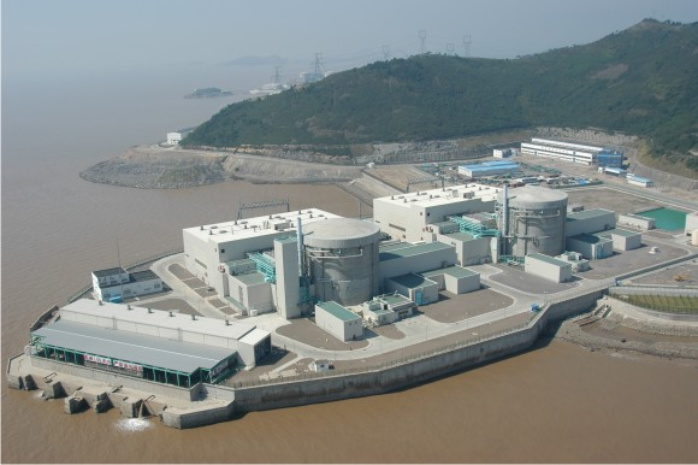 Qinshan Phase III Units 1 & 2 / Image Courtesy: Atomic Energy of Canada Limited (AECL)
Qinshan Phase III Units 1 & 2 / Image Courtesy: Atomic Energy of Canada Limited (AECL)
Net Capacity: 4,101 MWe
Country: China
It is the second largest nuclear power plant in China and the eight largest in Asia. Located in Qinshan town of Zhejing province, the NPP has a gross installed capacity of 4,310 MW and a net capacity of 4,101 MW. The power plant is divided into three phases; phase 1 consists of a small, first ever domestically produced nuclear reactor with a net capacity of 298 MW.
While the 2nd phase consists of medium-sized 610 MW pressurized water reactors. In 2002-2003, two slightly bigger CANDU model PHWRs (the 3rd phase) became operational. It is owned and operated by Qinshan Nuclear Power Company.
12. Hongyanhe Nuclear Power Plant

Net Capacity: 4,122 MWe
Country: China
Hongyanhe Nuclear Power Plant is China’s newest and largest operational NPP. Currently, it has four CPR-1000 reactors, but two more reactors are planned to be operational by 2020 with a more advanced version of CPR-1000; ACPR1000. The advanced reactors will have features such a core catcher and double containment as additional safety measures.
11. Fukushima Daini II Nuclear Power Plant
Net Capacity: 4,400 MWe
Country: Japan
Japan’s Fukushima Daini Nuclear Power plant became the sixth largest nuclear power station in Asia, after Japan’s Kansai Electric Power Co announced its plans to decommission the remaining two reactor units of the Oi Power Plant. The Fukushima Daini has four operational Boiling water reactors, with a net electric output of about 1,100 MW each.
After the catastrophic tsunami triggered by the great earthquake of 2011, all of the four reactors of Daini power plant automatically went offline, but was successfully revived afterwards. Another, more recent earthquake in 2016 caused some reactor’s cooling systems to fail.
10. Wolseong Nuclear Power Plant
 Image Courtesy: IAEA Imagebank
Image Courtesy: IAEA Imagebank
Net Capacity: 4,598 MWe
Country: South Korea
The Wolseong Nuclear Power Station is one of the few nuclear power plants in the world and the only in South Korea that operates on CANDU-type PHWR (Pressurized Heavy Water) reactors, which are capable of running on various types of fuel, including nuclear wastes.
The plant has a total of six nuclear reactors, four of which are older PHWR types, with a net capacity of 653 MW each, while two are new OPR-1000 type pressurized water reactors designated as Shin Wolsong-1, 2 which were commissioned in 2012 and 2015 with a greater electric capacity of 997 MW.
9. Cattenom Nuclear Power Plant
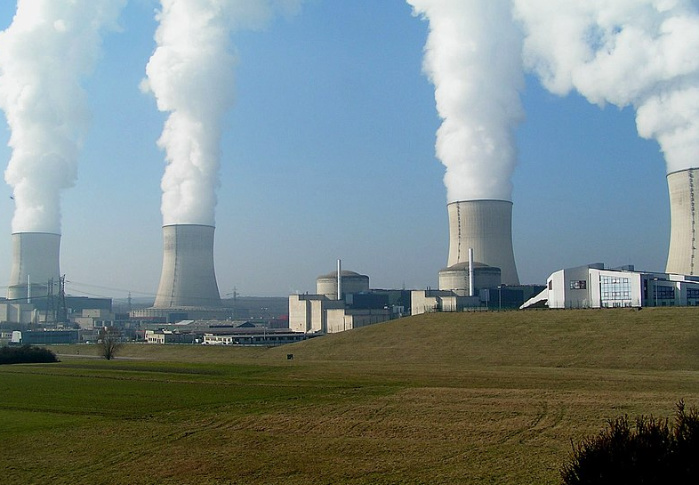 Image Courtesy: Stefan Kühn
Image Courtesy: Stefan Kühn
Net Capacity: 5,200 MWe
Country: France
France is currently one of the four European nations that has nuclear power plants with a net capacity of more than 3000 MWe, the others being Ukraine, Sweden and Belgium. The Cattenom Nuclear Power station is France’s third largest nuclear plant located in Grand Est, on the river Moselle.
The plant consists of four pressurized water reactor units, with each having 1300 MW of electric output. All the four reactors are built between 1971 and 1991 and are relatively modern. The plant is owned and operated by Électricité de France S.A or EDA, one of the biggest utility and power companies in the world.
8. Paluel Nuclear Power Plant
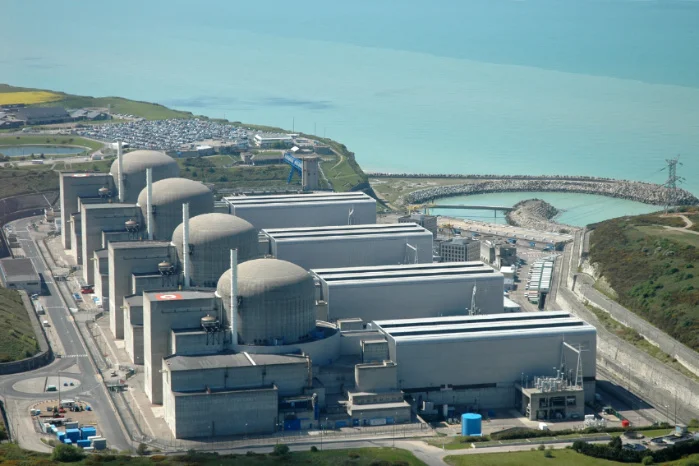 Image Courtesy: Entreprise et Découverte
Image Courtesy: Entreprise et Découverte
Net Capacity: 5,320
Country: France
After Cattenom, Paluel is the second largest nuclear power plant in France (by electrical output). Located about 40 km away from the coastal city Dieppe in the Normandy region, it is one of the largest nuclear power station in Eastern Europe. It has four type PWR nuclear reactors, with each having a total power output of 1,382 MW.
All the reactors became commercially operational in 1985-86 and are scheduled to be out of commission by 2026. On many different occasions, the power plant encountered problems associated with cooling as the supply of cold water was repeatedly blocked by seasonal macroalgae.
7. Gravelines Nuclear Power Station
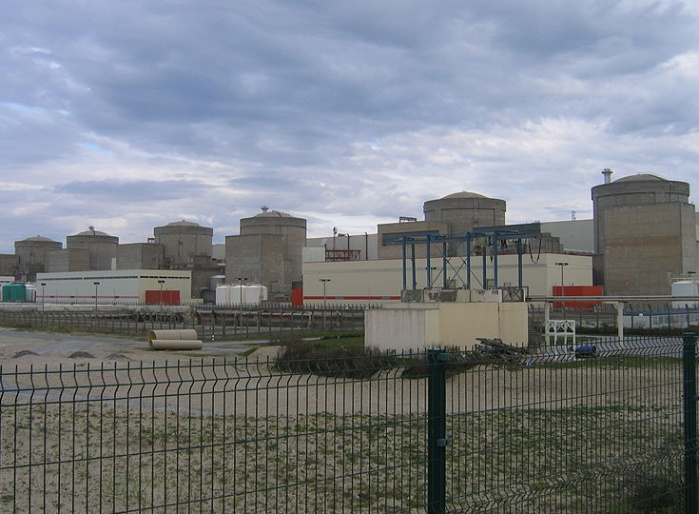 Image Courtesy: Douchet Quentin
Image Courtesy: Douchet Quentin
Net Capacity: 5,460 MWe
Country: France
The Gravelines NPP is the sixth largest nuclear power station in the world and the second largest in Europe (after Ukraine’s Zaporizhia). The plant consists of six 900 MW reactors, which became the first nuclear station to produce terawatt hour electricity in the world in 2010. Since 2006, the facility has reported three minor scales (INES scale) nuclear emergencies.
6. Zaporizhia Nuclear Power Plant
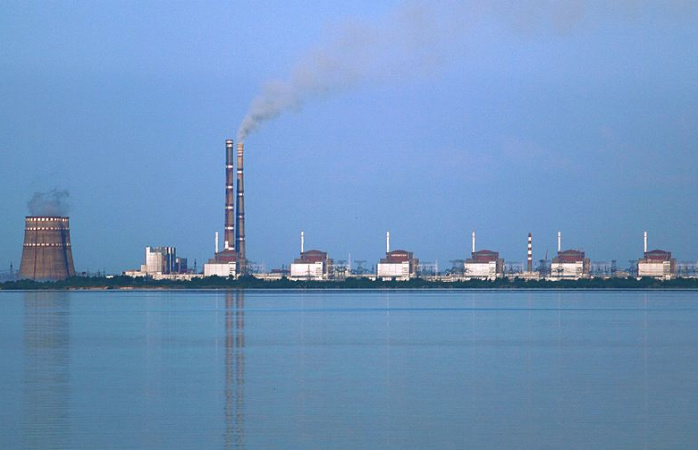 All six units of the Zaporizhia NPP. Zaporizhia coal power plant is visible on the far left.
All six units of the Zaporizhia NPP. Zaporizhia coal power plant is visible on the far left.
Net Capacity: 5,700 MWe
Country: Ukraine
Ukraine’s Zaporizhia Power Station is the largest nuclear power plant in Europe and it also happens to be the largest of the four nuclear plants in the entire country. The plant has six Soviet made VVER-1000 pressurized light water reactors (PWR), each generating 950 MW of power. This class of reactors is exclusive to parts of Europe and Asia.
The first unit of this plant was commissioned back in 1985 after the initial construction began in 1980, which finally ended in 1996 following the establishment of the sixth reactor. It generates almost half the nation’s electricity derived from the nuclear power. Following a large-scale renovation in 2017, the life of the entire plant is extended for the next 10 years.
Read: NASA Is Testing A Space Nuclear Reactor | Kilopower Project
5. Hanbit Nuclear Power Plant
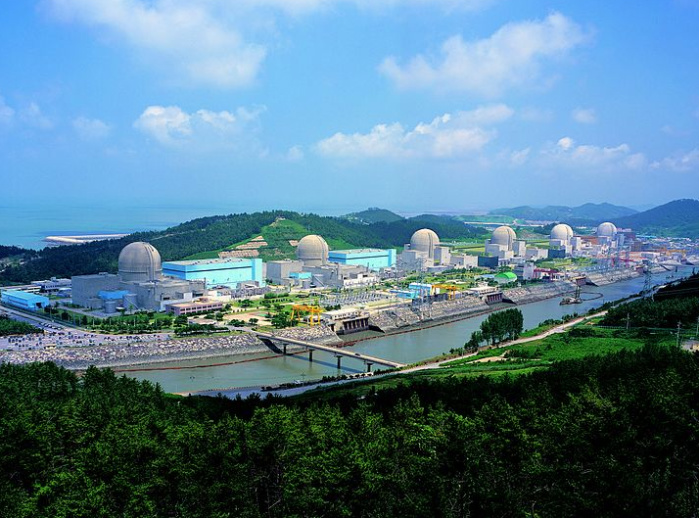 Image Courtesy: IAEA Imagebank
Image Courtesy: IAEA Imagebank
Net Capacity: 5,875 MWe
Country: South Korea
South Korea’s Hanbit Power Plant (formerly known as Yeonggwang NPP) is one the six Nuclear power plants above the 5500 MWe capacity in the world. Situated in the Jeollanam-do province of South Korea, the plant is operated by the Korea Hydro & Nuclear Power, a subsidiary of the country’s biggest power supplier, KEPKO.
All six units of the power plant are Pressurized Water Reactors (PWR), the first two of which were commissioned in 1986, then further reactors in 1994, 1995, 2001 and 2002 respectively. In 2012, two of the reactors were shut down for eight weeks after it was affected by forged components, which were in use since 2003.
4. Hanul Nuclear Power Plant
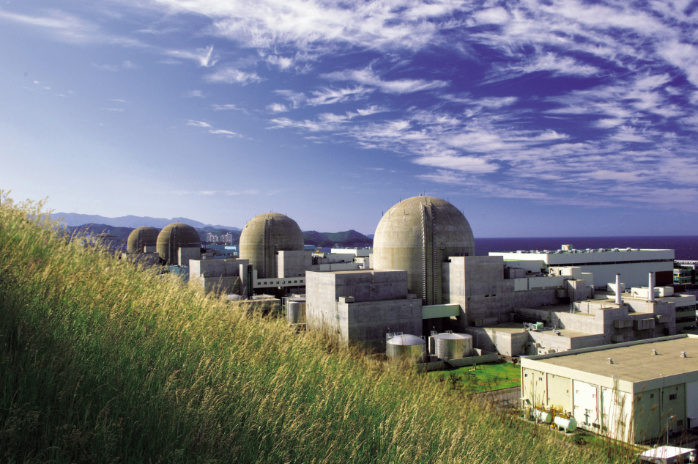
Net Capacity: 5,928 MWe
Country: South Korea
Formally known as Uljin, the Hanul Nuclear Power facility went online for the first time in 1988. It currently has six PWRs with a net capacity of 968 MW- 997 MW. Two more units are under construction, while another two are planned to be operational by 2022.
The new units have APR-1400, Generation III PWRs with a gross capacity of 1400 MW and are expected to cost the Korea Hydro & Nuclear Power about US$6 billion. It is the first to use Korean-made components for all critical systems.
3. Kori Nuclear Power Plant
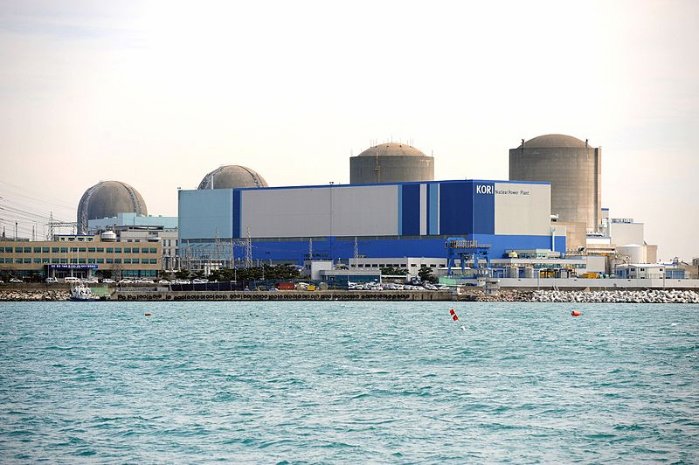 Image Courtesy: IAEA Imagebank
Image Courtesy: IAEA Imagebank
Net Capacity: 6,040 MWe
Country: South Korea
South Korean Kori Nuclear Power Plant is the second largest NPP in the Asia continent and the largest in the entire nation of South Korea. The facility is owned and operated by a KEPCO’s subsidiary, Korea Hydro & Nuclear Power since its first operation in 1978. It has a total of 7 operational reactor units composed of small to mid WH-60 and WH-F reactors and the bigger OPR-1000 PWRs.
Read: 13 Powerful Nuclear Form of Usual Things
The newest reactor unit employs Korea’s newest APR-1400 with 1400 MW net electric capacity. Three more units are planned using the same APR-1400 reactors.
2. Bruce Nuclear Generating Station
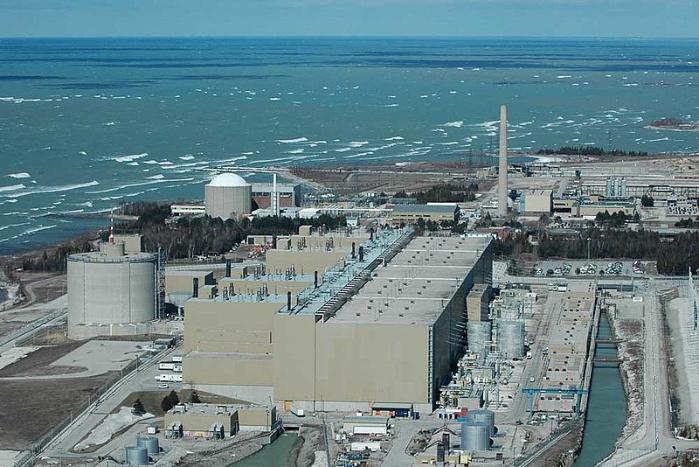 Image Courtesy: Chuck Szmurlo
Image Courtesy: Chuck Szmurlo
Net Capacity: 6,384 MWe
Country: Canada
The world’s second-biggest (net capacity) nuclear power station, Bruce Nuclear Power Generation is located in Inverhuron and Tiverton, Ontario on the eastern shore of Lake Huron from where it takes the water for cooling. The facility covers about 9.32 square kilometers of land. It is the largest nuclear station in the world by total reactor count, and currently the largest working NPP.
1. Kashiwazaki-Kariwa
 Image Courtesy: Flickr
Image Courtesy: Flickr
Net Capacity: 7,965 MWe
Country: Japan
With a net capacity of around 7,965 megawatts, the Japanese Kashiwazaki-Kariwa is the biggest nuclear power station in the world right now. This gigantic power plant is stretched over an area of 4.2-square kilometers with seven reactor units, two of which are the advanced boiling water reactor (ABWR).
Read: Russia Approves 70 Megawatt Floating Nuclear Power Plant
All the seven reactors use low-enriched uranium or LEU as fuel, which has about 20% concentration of U 235 . The Kashiwazaki-Kariwa plays a crucial role in the Japanese economy. Such a large plant size has several economic advantages, one of these being the limited impact of refueling outages of individual units on the plant’s total net power production.
Note: All the reactor units are off since 2011. The earliest proposed restart date is set in April 2019.


